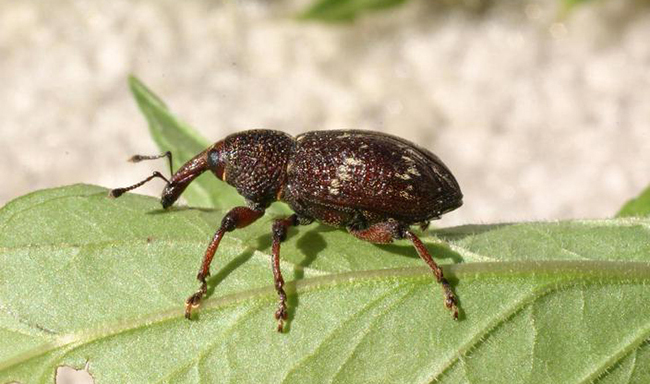Biological Control
Table of Contents

Biological control is a method of managing invasive species using living organisms such as insects, animals, and plants. For example, roadside managers who want to reduce a weed population may purchase and introduce to a weed-infested area an insect species that consumes the weed’s seeds or roots.
This method of weed control is inexpensive but can be slow to produce results. Biological control rarely eliminates the entire population of a weed in a given area but may reduce the size of the population. The Minnesota DOT recommends using biological control in areas one-third of an acre or larger and avoiding medians and roadsides that will be disturbed regularly.
Some weedy plant species that can be managed with biological control include spotted knapweed (Centaurea stoebe), leafy spurge (Euphorbia esula), and purple loosestrife (Lythrum salicaria).
To find out which insects are used to control a plant species, check recommendations in the Midwest Invasive Plant Network database or another resource that is updated with the latest information. Check to see if the insect you are considering using has any documented history of causing negative non-target impacts by also consuming desirable plants in the same area. Before introducing any insects for biological control, contact the Iowa Department of Agriculture and Land Stewardship to see if you need a permit. To learn more about where to purchase biological control insects, call your local county agricultural inspector, the Iowa Department of Agriculture and Land Stewardship, or search the web for companies that provide biological control insects.


